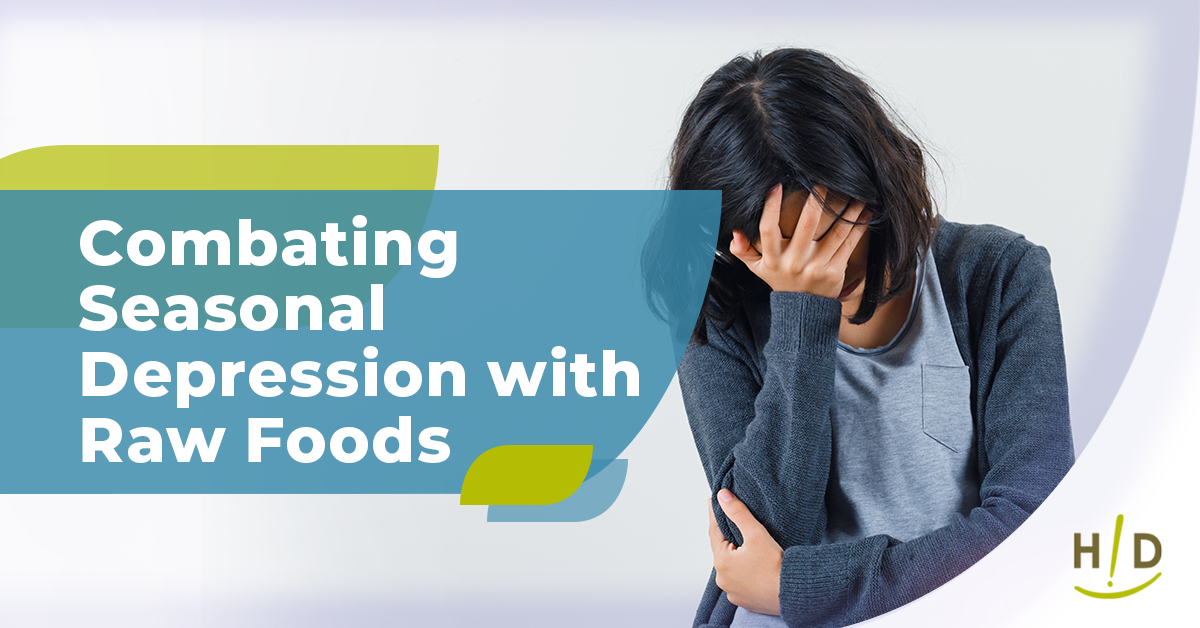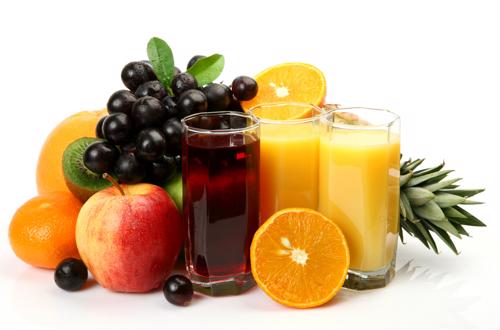For some of us, we may find ourselves dreading the winter months as the fog begins to descend upon our minds and hearts. You may start to find it harder and harder to find joy in winter, noticing yourself becoming less active. Perhaps you sleep more or less than you do in the summer and might find yourself no longer enjoying the hobbies you used to as well as over or under eating. You aren't alone. More than 5% of American adults experience what is more than ""the winter blues."" Seasonal depression or seasonal affective disorder (SAD) occurs for many Americans at the same time of year. Fortunately, there is a wide range of treatments now available. Along with various kinds of therapy, you might be able to help bolster your SAD this year and in the future with the help of some nutrient-abundant, nourishing raw foods.
What is SAD?
Seasonal affective disorder (SAD) is depression that is triggered by changes in seasons. The symptoms usually begin once fall starts, gradually getting worse in the winter before tapering off in the spring. Some of us may experience a very mild version of SAD during the winter that may go on for a short period. That's relatively normal to feel a little down sometimes during the winter months as we're most often stuck inside, and it gets dark very early. But for those who suffer from severe SAD, it goes far beyond that—it's a form of deep depression that affects every aspect of their life, including their thoughts and emotions. Even a few people get a rare form of SAD called "summer depression" that starts in the late spring or early summer and ends in the fall.- Depression is very different from feelings of sadness or unhappiness. It is not a sign of personal weakness either.
- Women are affected by SAD more than men.
- Without treatment, therapy, and lifestyle changes, SAD can last for weeks, months and occur every year for years. The good news is that most people suffering from SAD see improvements with therapy, lifestyle changes, medication, or a combination of all three.
- Don't be afraid or hesitant to seek help from your healthcare provider as soon as possible.
What Causes SAD? Unfortunately, scientists do not fully understand what causes SAD. Research suggests that those suffering from SAD may have reduced activity of the brain chemical (known as a neurotransmitter) serotonin which regulates mood. There is also some evidence that suggests that the changes in levels of sunlight during a seasonal shift which usually controls the molecules that help maintain normal serotonin levels, do not function as optimally, which results in decreased serotonin in winter. Other research believes there may be a connection between people who produce too much melatonin and SAD, as melatonin is the hormone central to maintaining regular sleep-wake cycles. Overproduction of this hormone causes increased sleepiness. It is also thought that deficits in vitamin D may worsen these problems as vitamin D is believed to promote serotonin activity. With less sunlight in winter, people with SAD may have lower vitamin D levels. Scientists are still unsure precisely what causes SAD and are continuing to research.
What Are the Symptoms of Seasonal Depression?
Whether it is fall onset SAD or spring onset, the following are the most common symptoms in those that experience SAD:
- Increased sleep and daytime drowsiness
- Loss of interest and pleasure for favorite activities formerly enjoyed
- Social withdrawal from friends and family with increased sensitivity to rejection
- Increased anxiety and irritability
- Long periods of feeling guilty or hopeless
- Fatigue and loss of energy level and motivation
- Decreased ability to focus or concentrate
- Trouble thinking clearly
- Weight gain
These symptoms tend to come back and improve almost at the same time every year. Foods That May Help Combat Seasonal Depression 1. Folate-rich Raw Foods Folate, also known as folic acid or vitamin B-9, is critical in red blood cell formation, healthy cell growth, and function. Several scientific studies and research found that individuals with depression have lower levels of folates than those without depression. (1) Luckily, many plant-based, raw foods are brimming with folate along with a wealth of brain-boosting vitamins, like these:
- Raw green beans
- Raw green peas
- Raw spinach
- Raw leafy greens
- Citrus fruits
- Raspberries
- Blueberries
- Pears
- Avocado
- Carrots
- Broccoli
- Kale
- Collard greens
- Swiss Chard
3. Omega-3 fatty acids Omega-3 fatty acids can be found in fish, seeds, and dietary supplements, such as fish oil. ALA (alpha-linolenic acid) is an essential fatty acid that our bodies cannot produce, meaning we must get this critical fatty acid from the foods we consume. In research published on June 16th, 2021, a team led by King's College London has, for the first time, shown when omega-3 fatty acids are given to patients with depression, they are metabolized into molecules called lipid mediators. Lipid mediators and the levels of these in the blood have been linked to improvements in depression symptoms. (2)
The best sources of raw, plant-based omega-3s can be found in:
- Flax seeds
- Chia seeds
- Walnuts
- Hemp seeds
- Perilla oil
- Stay as active as possible. Try walking or yoga. Exercise is a fantastic way to fight the imbalance of brain neurotransmitters. When we work out, our brains make mood-boosting endorphins.
- Get outside. Even on an overcast, cloudy day, going for a walk or just sitting outside is a great way to get some sunlight and a boost of vitamin D.
Our diets do more than just provide energy and fullness; they impact every aspect of our lives, including our mood. A healthy diet rich in nutrient-packed, non-GMO, non-processed, organic raw foods can make a life-changing impact. We encourage you to try eating cleaner and fall in love with food again.
Sources:
1. https://www.mhanational.org/folate
2. https://www.kcl.ac.uk/news/new-insight-into-how-anti-inflammatory-effects-of-omega-3-fatty-acids-could-help-reduce-depression







